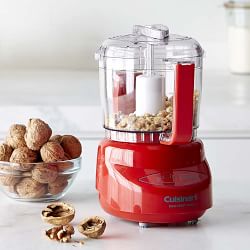 What to Consider When Buying a Food Processor Made to slice, chop, grind, puree, and more, food processors are kitchen doers and the nearest thing so far to a sci-fi style food preparation robot. But until then, you can rely on a handy food processor. But how do you know one when you see one? Size/Capacity
What to Consider When Buying a Food Processor Made to slice, chop, grind, puree, and more, food processors are kitchen doers and the nearest thing so far to a sci-fi style food preparation robot. But until then, you can rely on a handy food processor. But how do you know one when you see one? Size/Capacity
The 10 Most Unanswered Questions about Reviews
The size or capacity of your food processor should match your recipe requirements. But do remember that a manufacturer’s listed bowl size may not be the exact amount of ingredients you can add simultaneously. Processors often hold one or two cups less, and even less for anything liquid.
Discovering The Truth About Reviews
In any case, when it comes to food processors, size does matter. Too small renders the machine useless; too big means it will consume more space on your counter than needed. If you shop around, you will find three sets of processors based on capacity: > Mini prep (3-4 cups) – good for small individual tasks such as chopping nuts, mixing sauces, etc. > Mid-size (7-9 cups) – a larger version of the mini-prep type > Large (11-13 cups) – adequate for a whole family’s needs > Extra large (14-20) – best for catering and other large scale food preparations Motor Power The second most crucial consideration when buying a food processor is its motor power. An average size machine should have 400 watts of power, and anything bigger should be at least 750 watts. Obviously, more muscle is required for bigger jobs. Additionally, a heavy base is a good design element as it means more stability while the machine is on the counter during operation. Controls With food processors working very quickly, On/Off and Pulse may be the only two controls you’ll actually need. Small choppers can also come with high-low speeds, while high-end machines can have a “dough” setting. Other Important Elements Two great design features worth having are covered touch pads allowing for easier cleaning and wipe-down, and a marking on the mixing bowl to help you with your measurements. Maybe most importantly, choose something with a wide feeder tube, which is that chute where you push or pour ingredients into. A bigger chute reduces the need to pre-cut large veggies such as squash or cucumbers. Also included is a plastic food pusher, otherwise known as a prod. You certainly don’t want your fingers as a substitute! As sharp, buzzing knife blades are totally hazardous, the best food processors never start until the lid and base have been correctly locked in position. So look for locks! Lastly, a standard S-shaped metal chopping blade typically comes with a food processor, but a more expensive type may include whisks and juicer attachments too, as well as a blunt blade for kneading and a variety of shredding/slicing and specialty cutting discs).